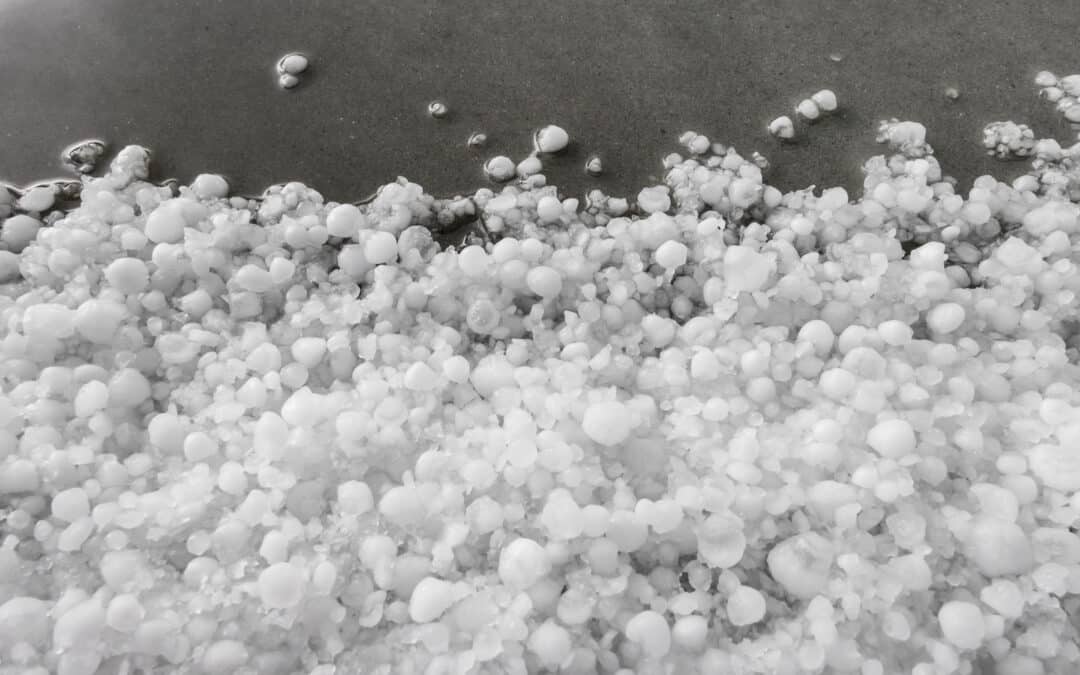When a hail storm strikes your home, it’s your roof that takes the brunt of the damage. The degree of damage depends on a variety of factors, from your roofing materials to the size, density and velocity of the hail. Even if you think a recent hail storm was mild, it’s important to check your roof for damage to avoid long-term issues that can be disruptive and costly. We’ve put together an essential FAQ for any homeowner who finds themselves wondering: What does hail damage on a roof look like, and what should I do if I see it?
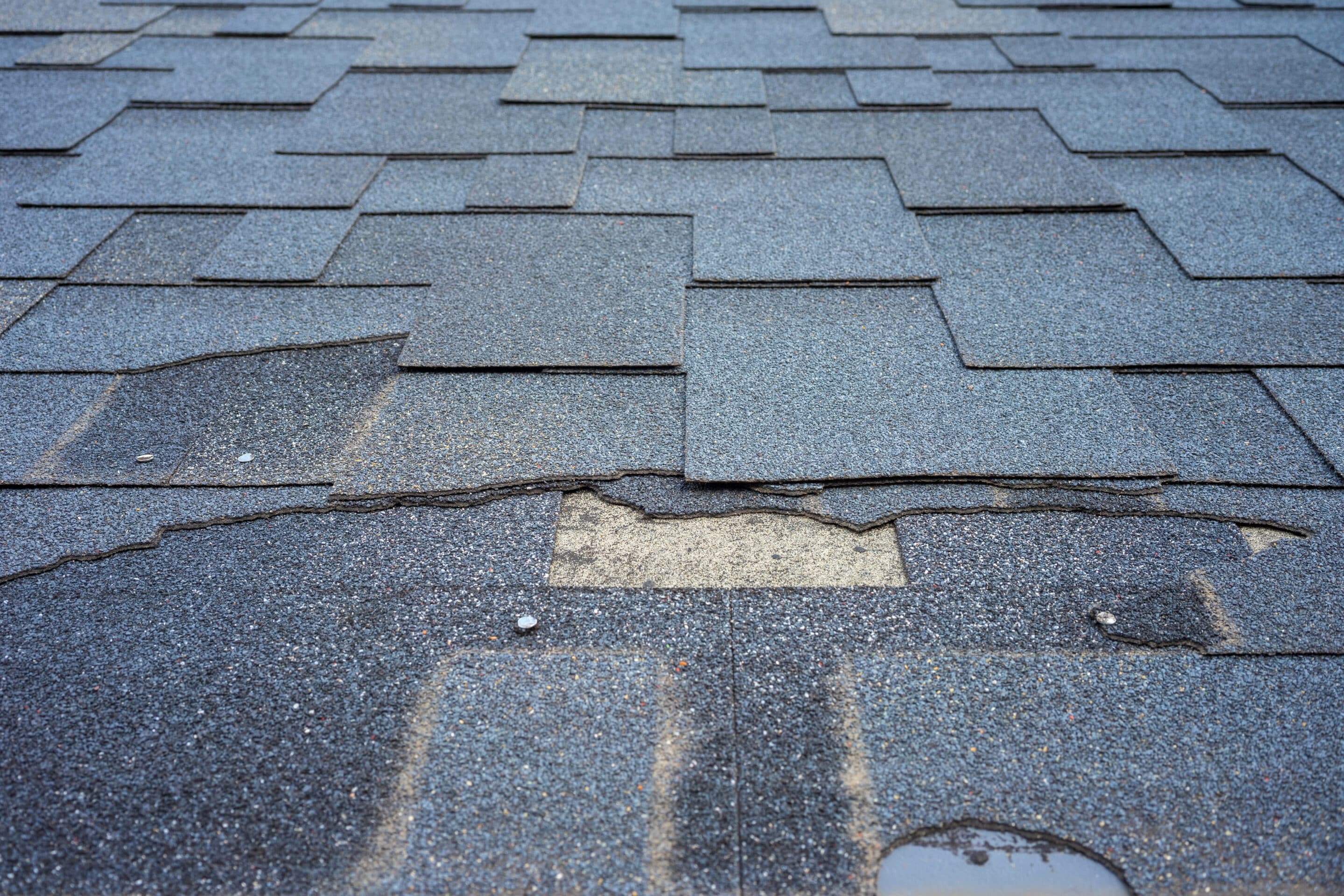
What does hail damage on a roof look like?
Roof damage from hail tends to be either very obvious or quite hard-to-spot, which doesn’t make things easy for the average homeowner! Complicating things even further, your roof will react differently to hail depending on your roofing materials and the size and density of the hail. Here’s a quick primer on what hail damage looks like on different types of shingles:
What Does Hail Damage Look Like On Asphalt & Composition Shingles?
- Random, pattern-less damage
- Dents, dings or “bruises” that are black in color & soft to the touch
- Loss of granules, i.e. granules visibly falling away from your roof, washing down the sides of your home and into your driveway
- Exposed roof felt
- Shiny asphalt and/or mat
What Does Hail Damage Look Like On Wood Shingles?
Hail damage on wood shingles usually appears random and without any discernible pattern, like it does on other shingles. But unlike asphalt shingles or composition shingles, wood shingles do not dent or ding. Instead, wood shingles “split.” This splitting may have:
- Brown or orange coloration
- Sharp corners & edges
- Little to no deterioration at the edges
- Impact marks or dents along it
Regardless of the type of shingles you have, it’s crucial to remember that your roof may have hail damage even if you can’t see large dents or splits. The other signs of hail damage to your roof are dents, dings or “splatter marks” to your roof vents, gutters, and/or flashing. If your roof is displaying any of these signs of damage following a hail storm, it likely warrants a homeowners insurance claim.
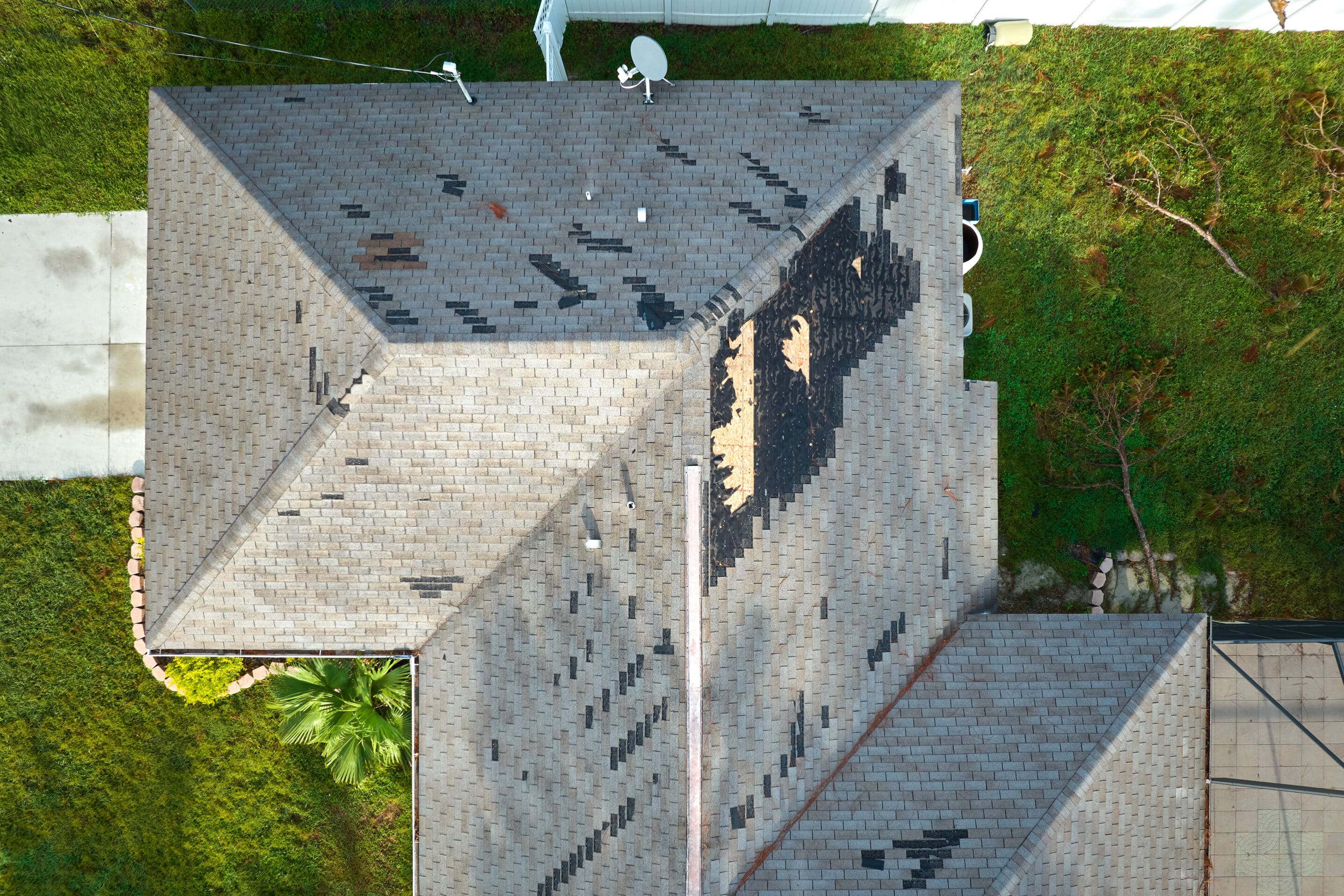
How can I tell if my roof has hail damage without getting on my roof?
Unless you’re a roofing contractor, we don’t recommend getting on your own roof to assess possible hail damage. Instead, there are some easy ways to determine whether your roof is likely to have hail damage from the safety of the ground.
First, if your vehicles or siding have sustained visible hail damage, or your neighbors are repairing or replacing their roofs, it’s probable that your roof has also been damaged. You can also make similar assessments by examining the following for damage:
- Windows & window screens
- Garage door
- Painted wood or shutters
- Exterior AC units, electric meters or grills
- Mailboxes, downspouts & other soft metals
- Stained wooden decks
If you notice dings, dents, cracks, holes or other damage to the above components after a hailstorm, you are likely safe to assume that your roof has taken some degree of damage as well. You can also check your driveway for shingle granules that have come loose and washed off your roof, as that is another good sign that you’ve sustained hail damage.
What should I do if I think my roof has hail damage?
If you believe your roof has hail damage, there is some good news: Hail damage can be promptly addressed by experienced contractors, and it is covered by most homeowners insurance policies.
Your first step after identifying probable hail damage to your roof should be calling your insurance company. They’ll instruct you to take one of two next steps: Either they will send an insurance adjuster to your home, or tell you to contact a local roofing contractor for a damage inspection.
Regardless of which party you deal with first, you will ultimately need a quality local contractor to complete the work of replacing your roof after hail damage. Easily the most important step in the entire process is to find a reputable roofing contractor who has experience repairing or replacing roofs after hail damage and who regularly deals with insurance companies regarding hail damage claims. Simonson recommends contractors who are members of our local builder associations (CMBA, MMBA, UBA.) This will make the experience much easier and less stressful for you, and reduce the likelihood of ending up in “claim purgatory.”
If your insurance company sends an adjuster
The adjuster will perform an inspection of your roof to either approve your claim or determine that there were no signs of hail damage. If your claim is approved, you’ll then be able to hire a local roofing contractor to complete the work. If your claim is not approved, it isn’t necessarily the end of the road — you can ask your insurance company to send another adjuster out, just to be sure.
If your insurance company tells you to call a contractor
If your insurance company tells you to contact a roofing contractor, you’ll reach out to the reliable local contractor of your choosing and arrange for them to come out for an inspection.
During their inspection, they will take photos of any suspected hail damage to send to the insurance company. Your contractor will fight for your best interests with your insurance company regarding your product and material needs to address the damage. Your insurance company will send out an adjuster to confirm the hail damage indicated by your contractor. If the adjuster agrees with your contractor’s assessment of the damage, they will approve your claim and your contractor can begin their work.
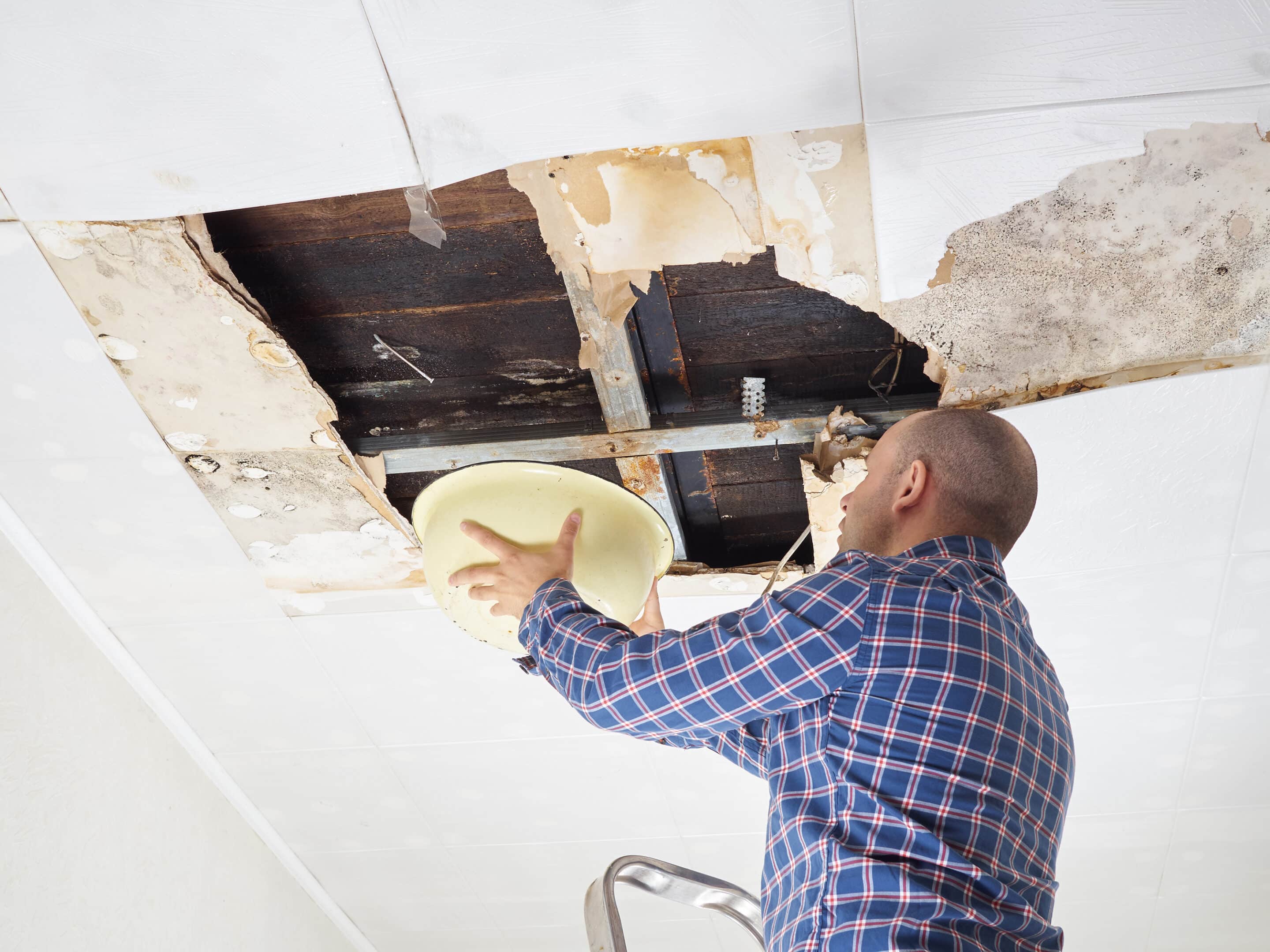
What can go wrong if I don’t replace my roof after hail damage?
Hail damage can easily result in a variety of issues for you and your home. Some of these issues are merely aesthetic, like visible dents in a metal roof, while others can cause very real, lasting damage.
Water leakage into your home is the most immediate and concerning threat following a hail storm. Dents and the loss of protective granules on your shingles can lead to holes which, left unattended, will invariably expand. If hail fractures or breaks your shingles, the entire shingle will eventually fall off entirely.
Methods of “repairing” leaks due to hail damage, like certain coatings, are short-term fixes and are not recommended. These methods can void the warranty on your shingles and make future roof replacement more costly.
Instead of opting for quick fixes, contact your local contractor to assess the damage and provide a replacement estimate. Even if you do not notice visible damage following a confirmed hail event, it never hurts to call a contractor to check. Most contractors will check your roof for damage and provide an estimate free of charge.
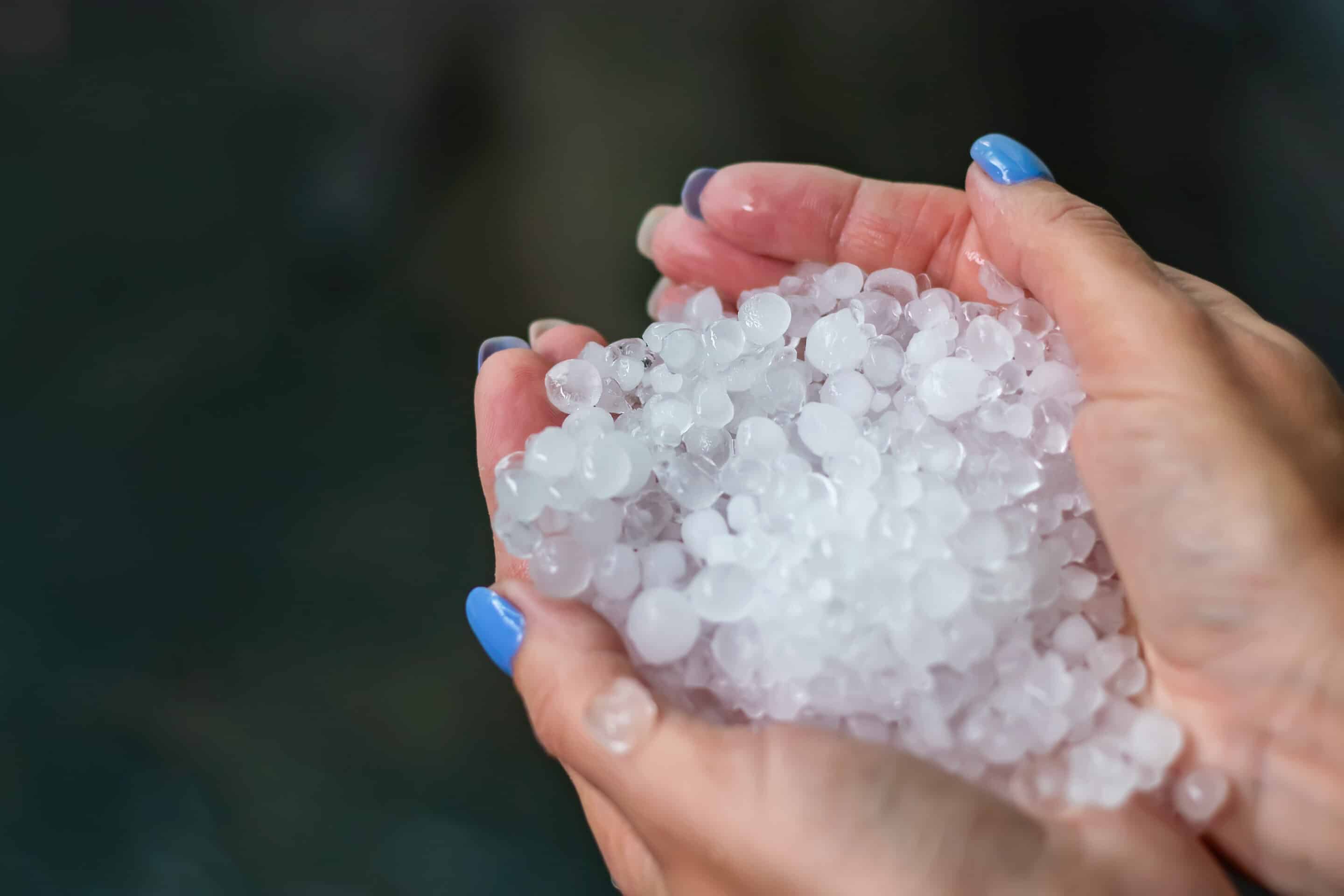
How can I protect my roof from hail damage in the future?
The best defense against hail damage is a healthy roof. Routine roof maintenance, repairs to related elements like gutters, vents and flashing, and scheduled roof replacement due to age all contribute to the ultimate efficacy of your roof and its ability to withstand hail damage. If possible, selecting a home with a steep-sloped roof is ideal, as low-sloped and flat roofs are more likely to sustain severe damage.
Again, if you’ve experienced a hail storm, it is always a good idea to call a reputable local roofing contractor to come out and assess your roof for damage, even if none is visible to your naked eye. At Simonson, we pair our hail damage clients with highly experienced contractors who specialize in storm damage and insurance claims. Choosing a credible contractor protects you from predatory “storm chasers” who solicit door-to-door after storms and ensures that any work done to your roof is completed by experienced experts.
Repairing or replacing a roof due to hail damage?
Simonson can help! Contact us today to learn more about our premium roofing materials or to receive expert contractor recommendations.

